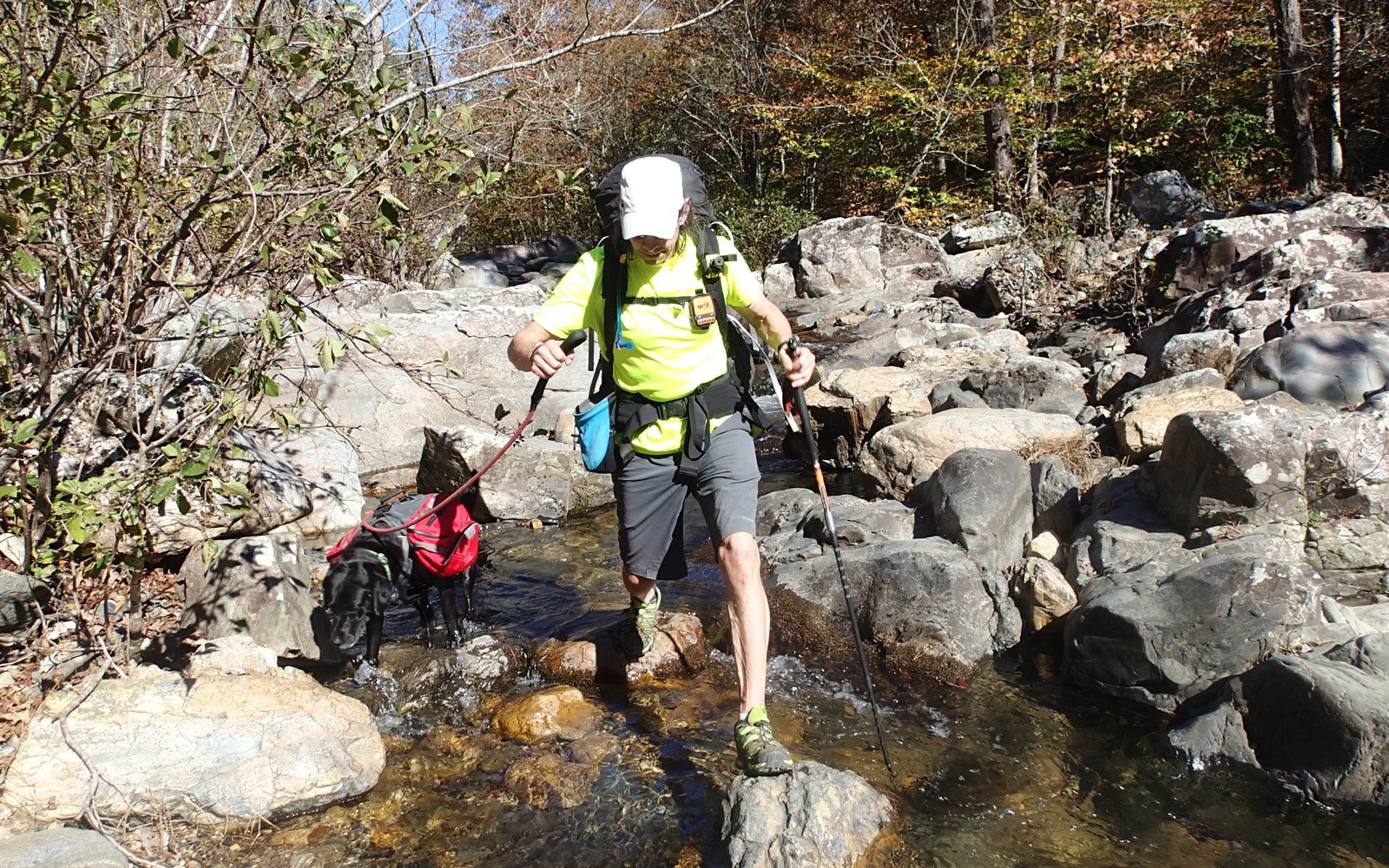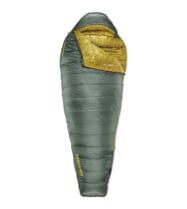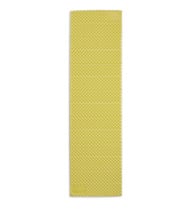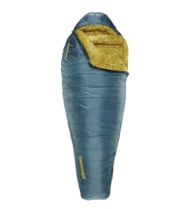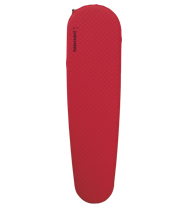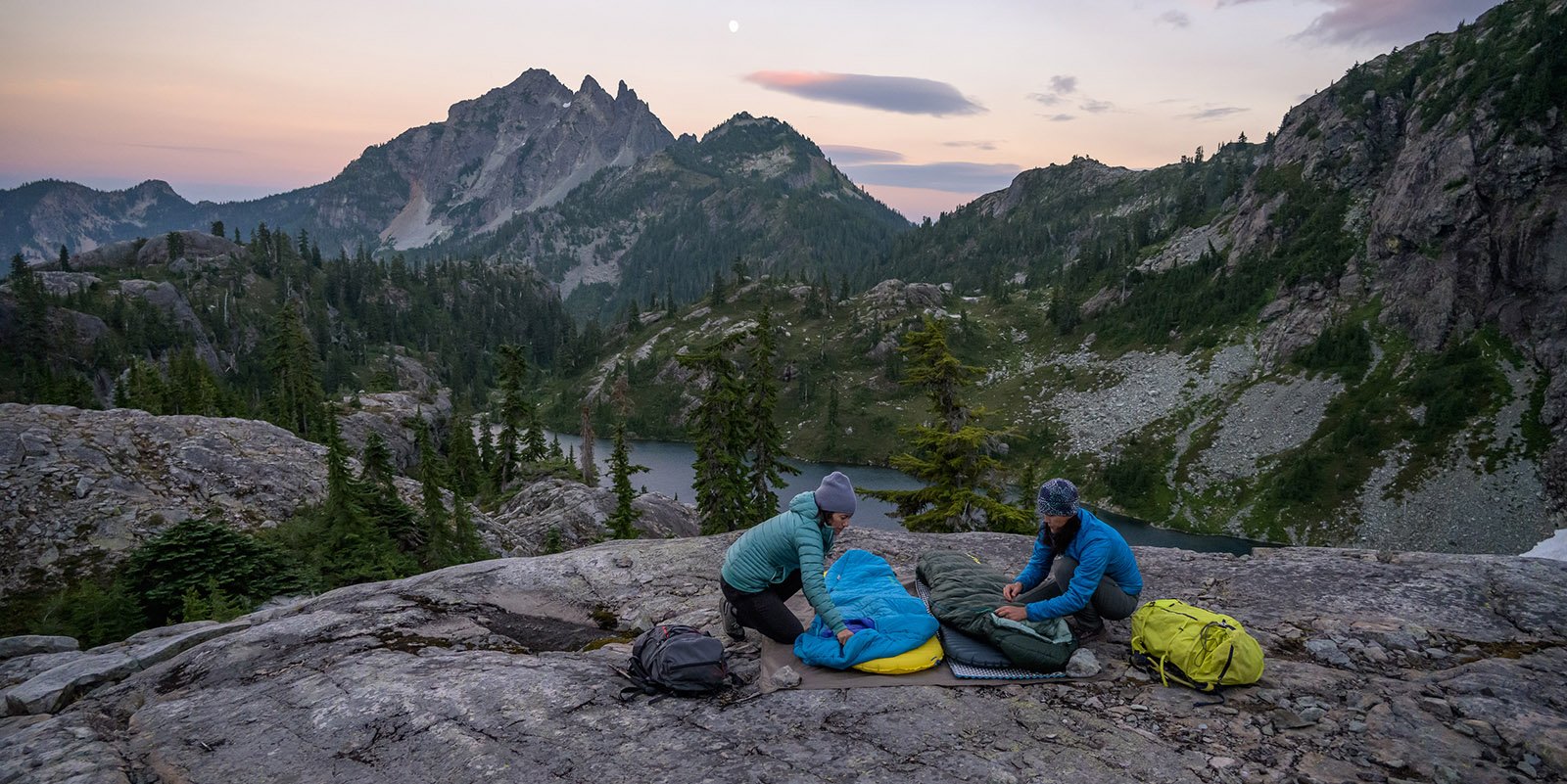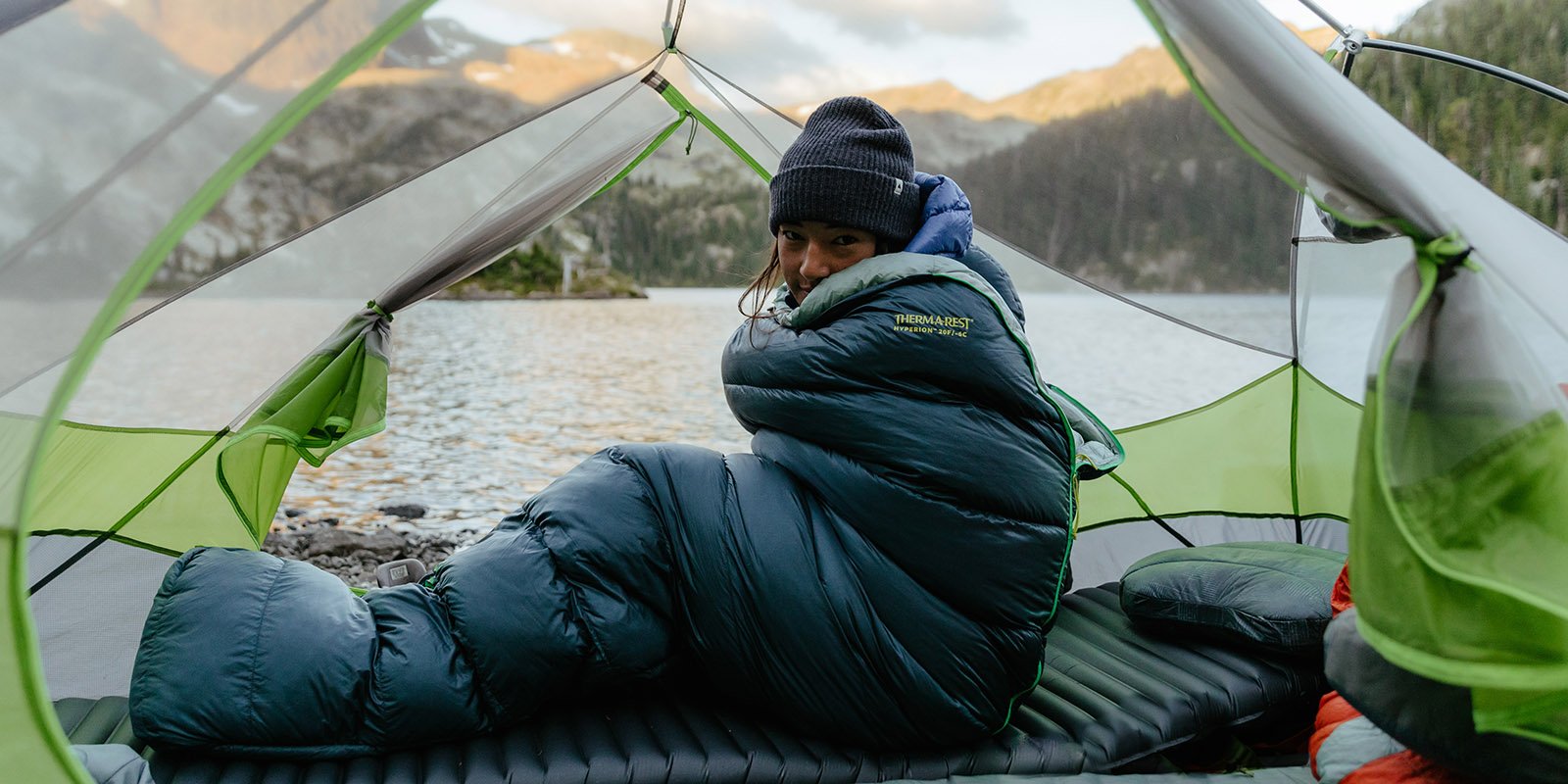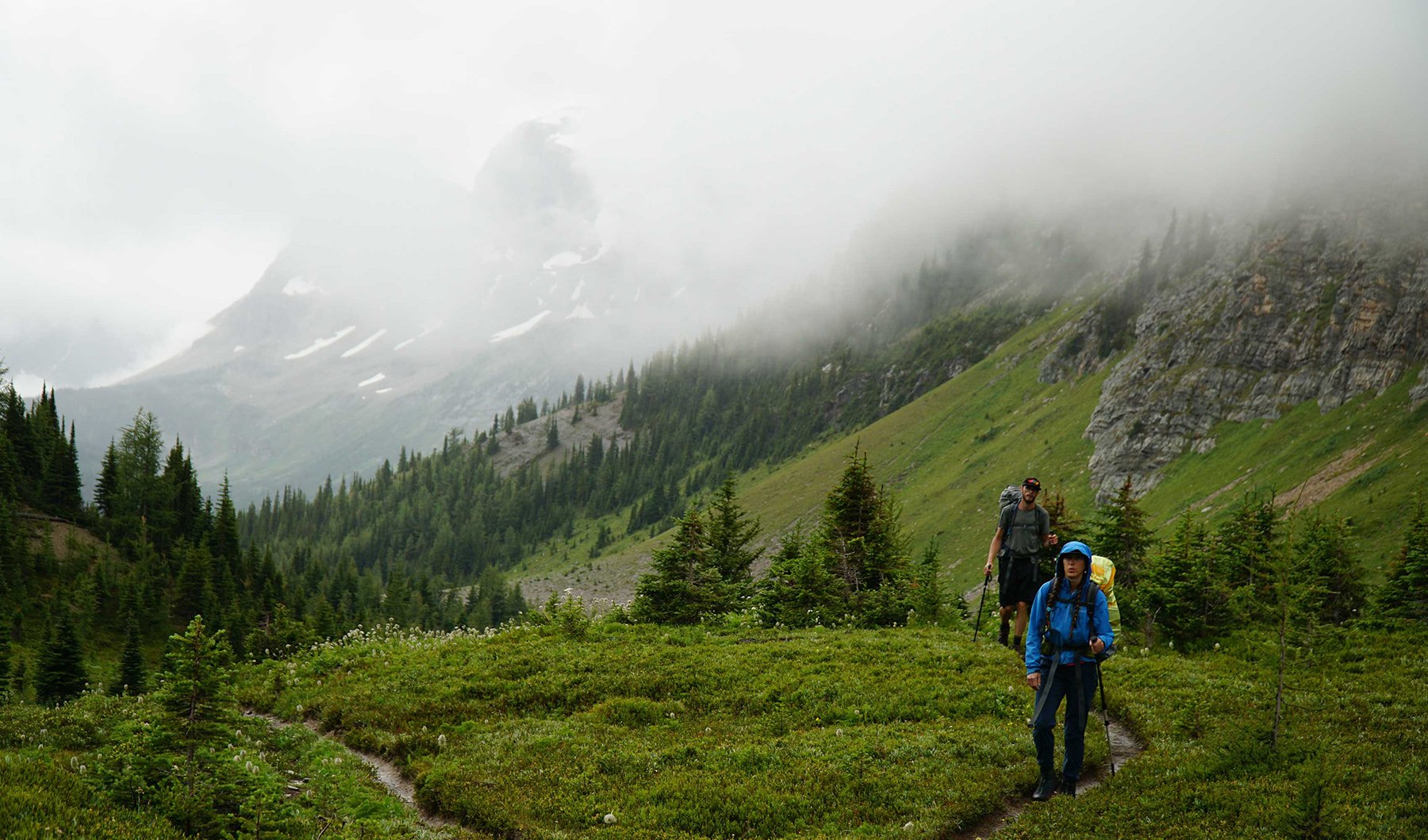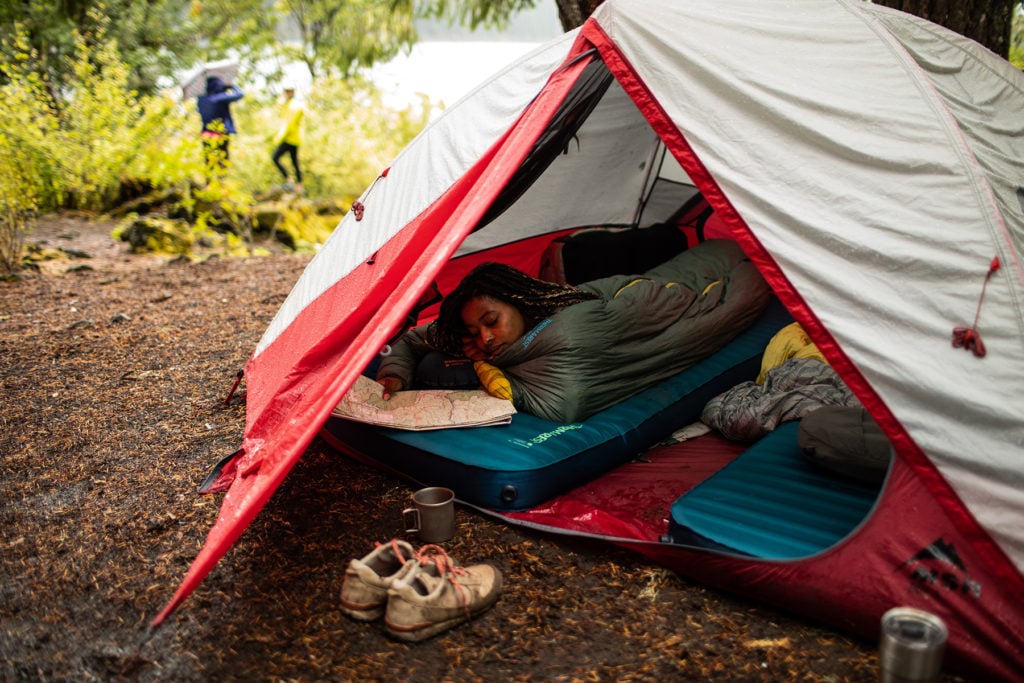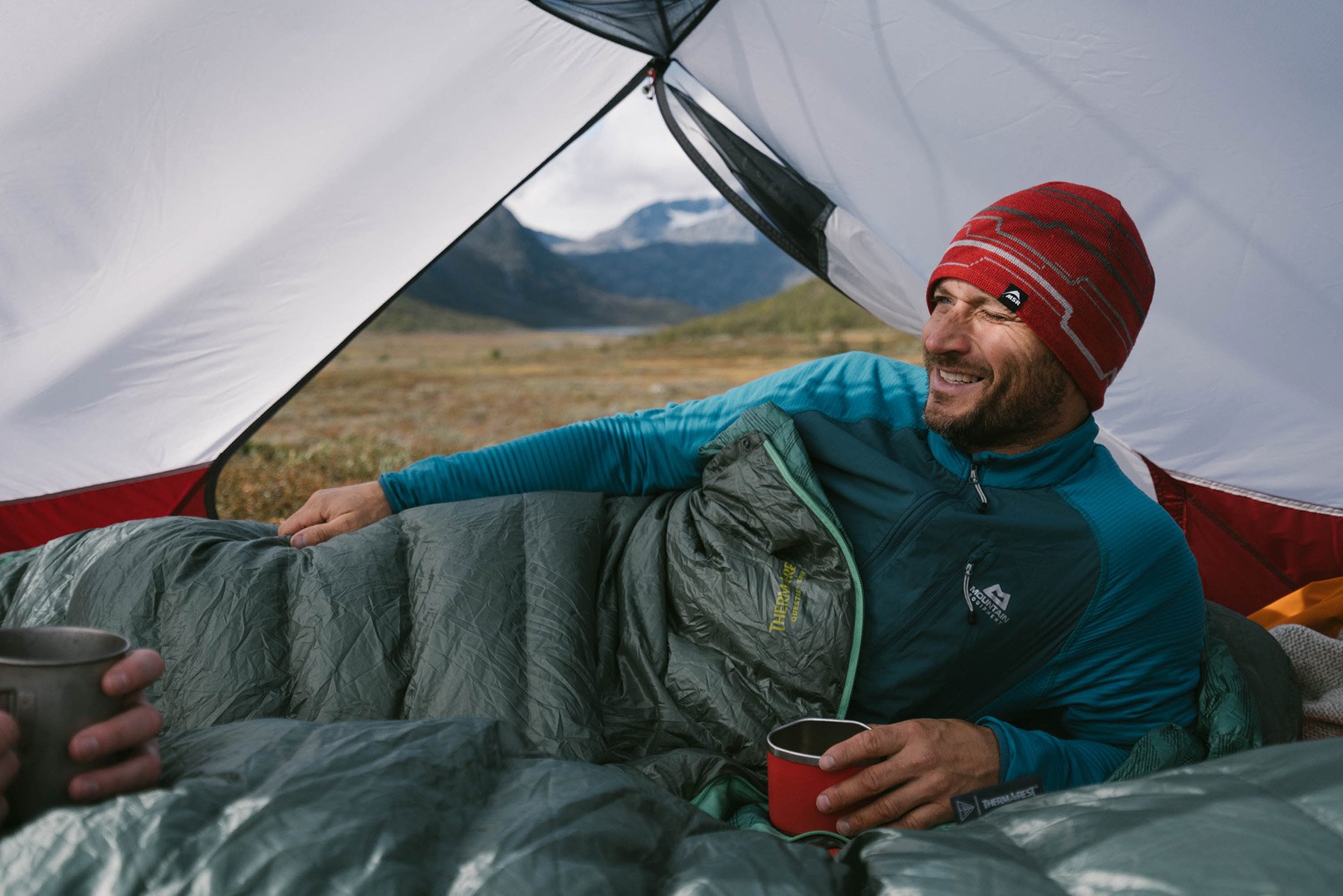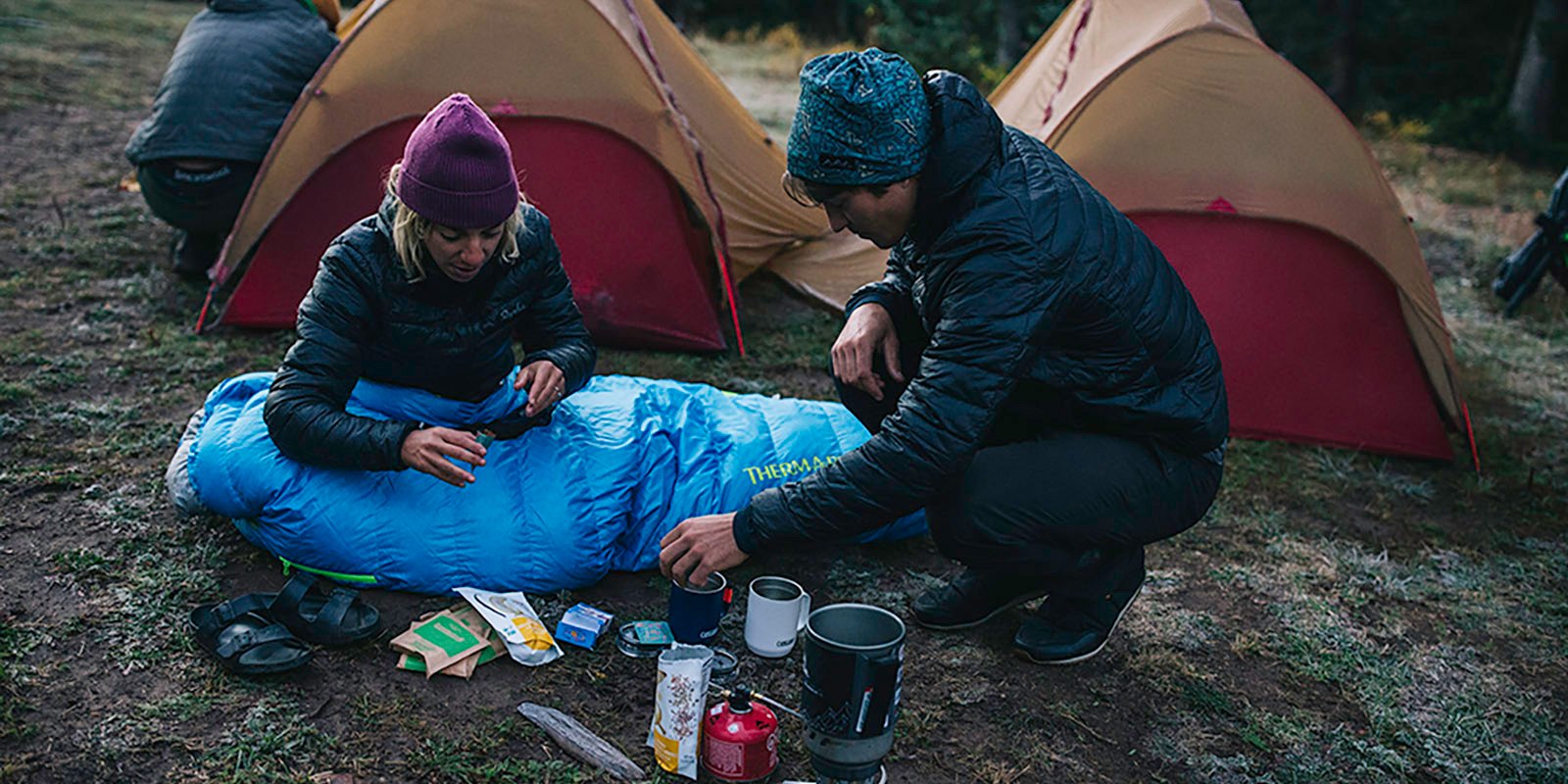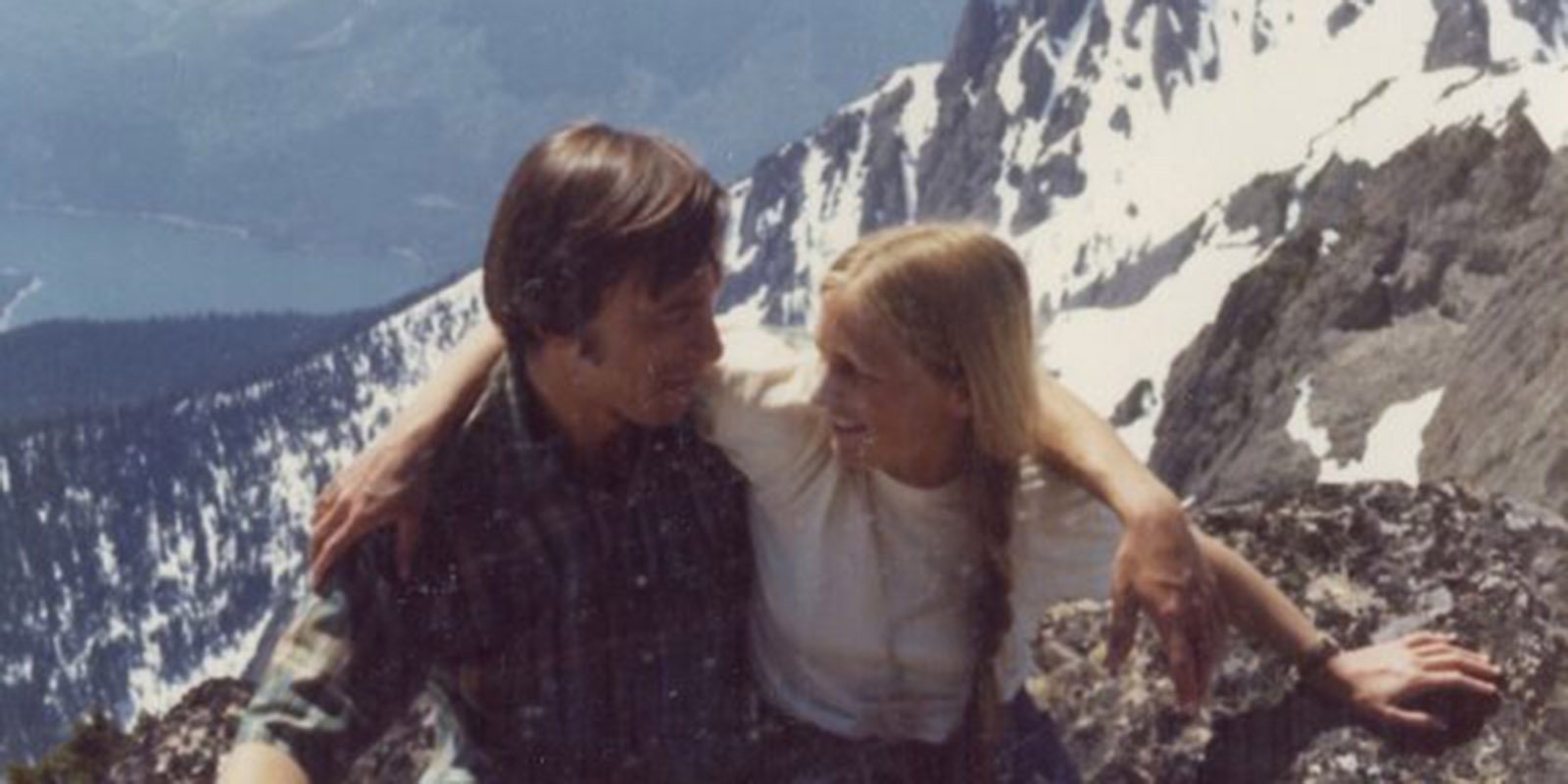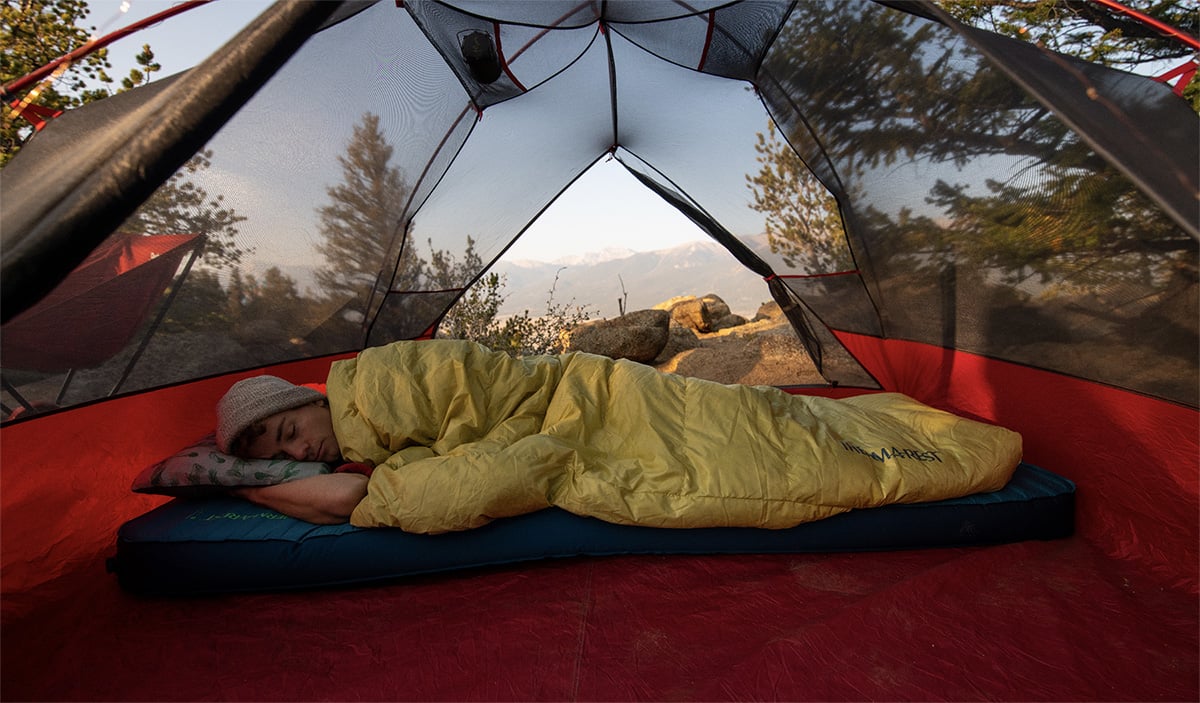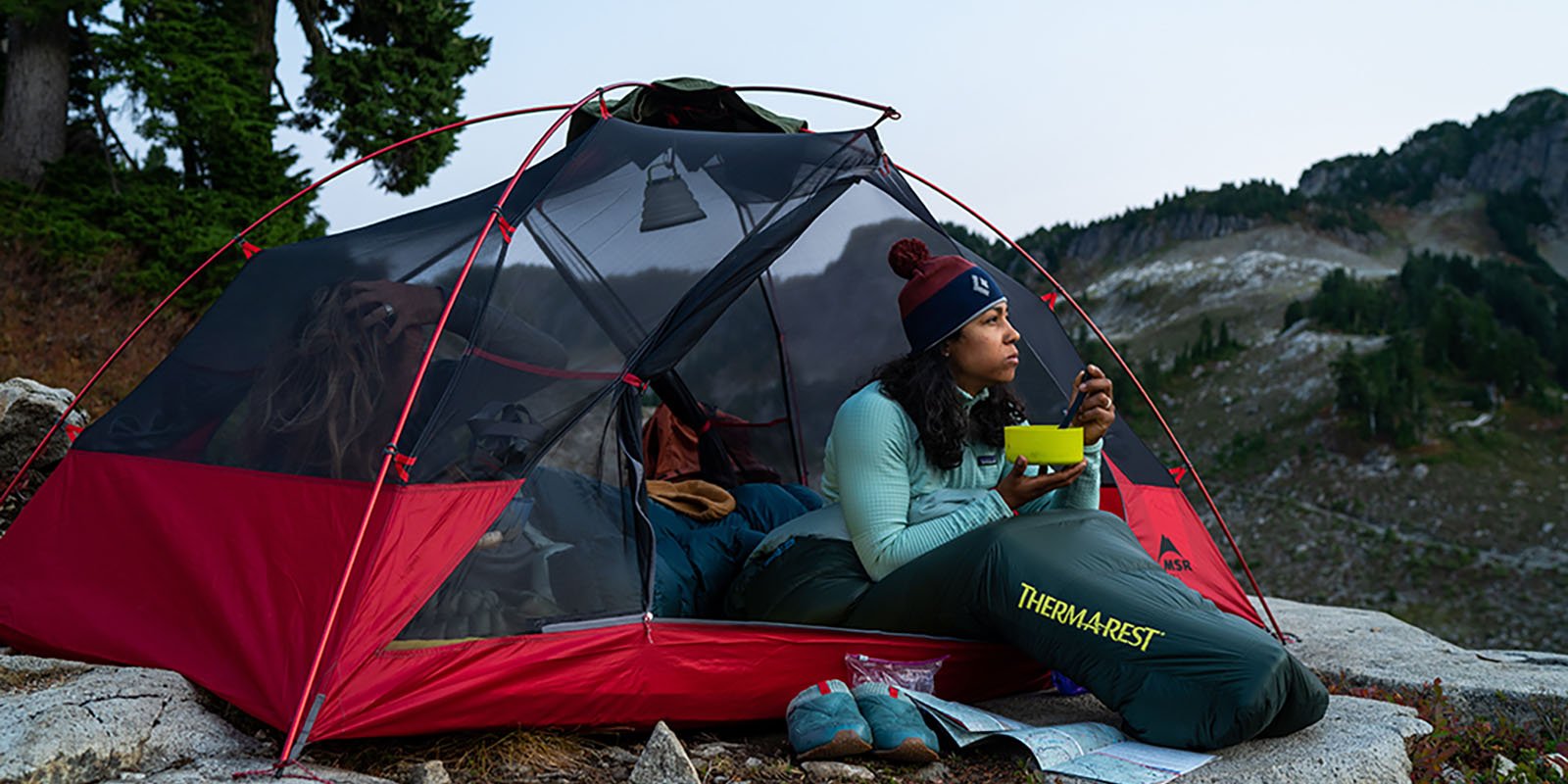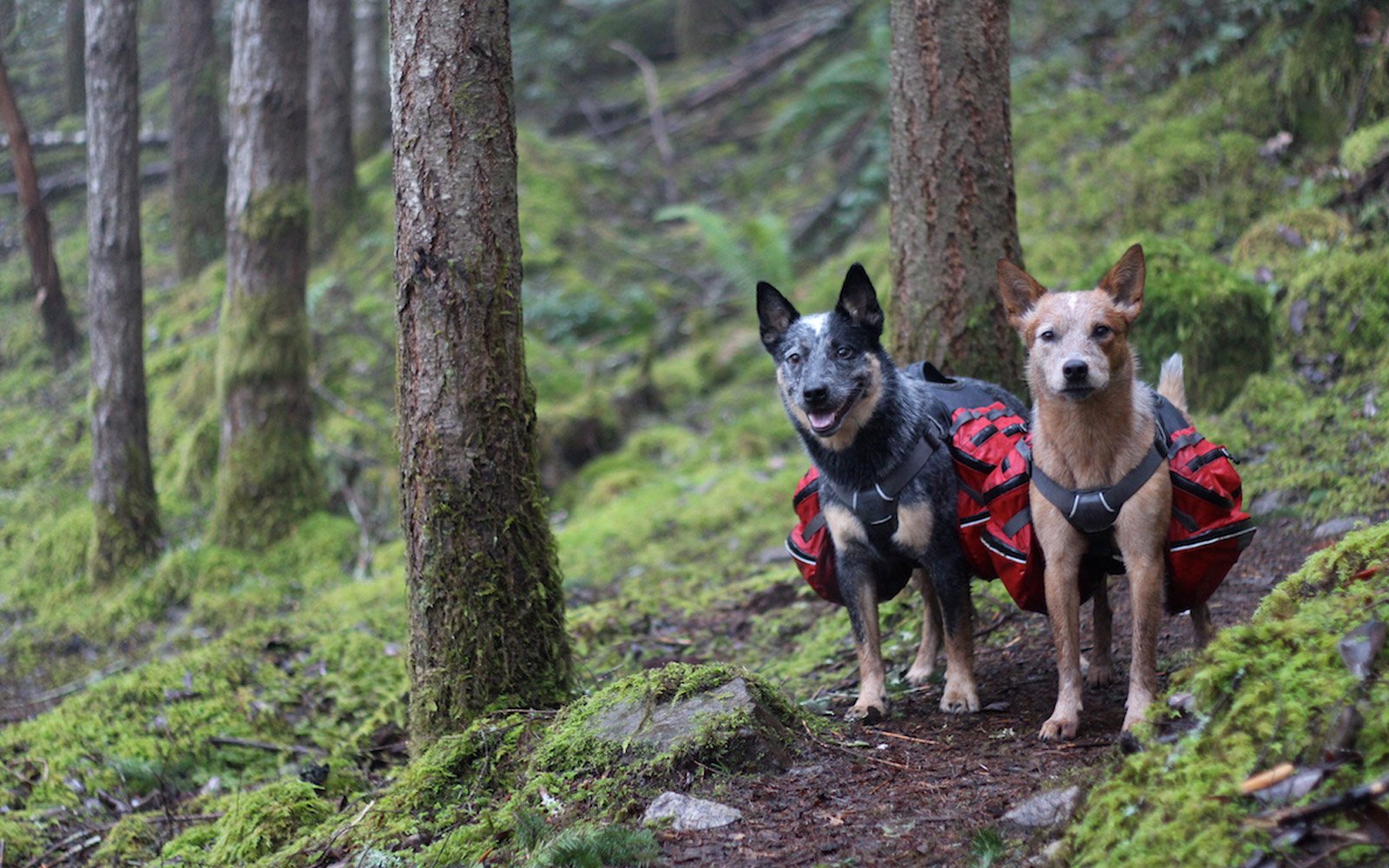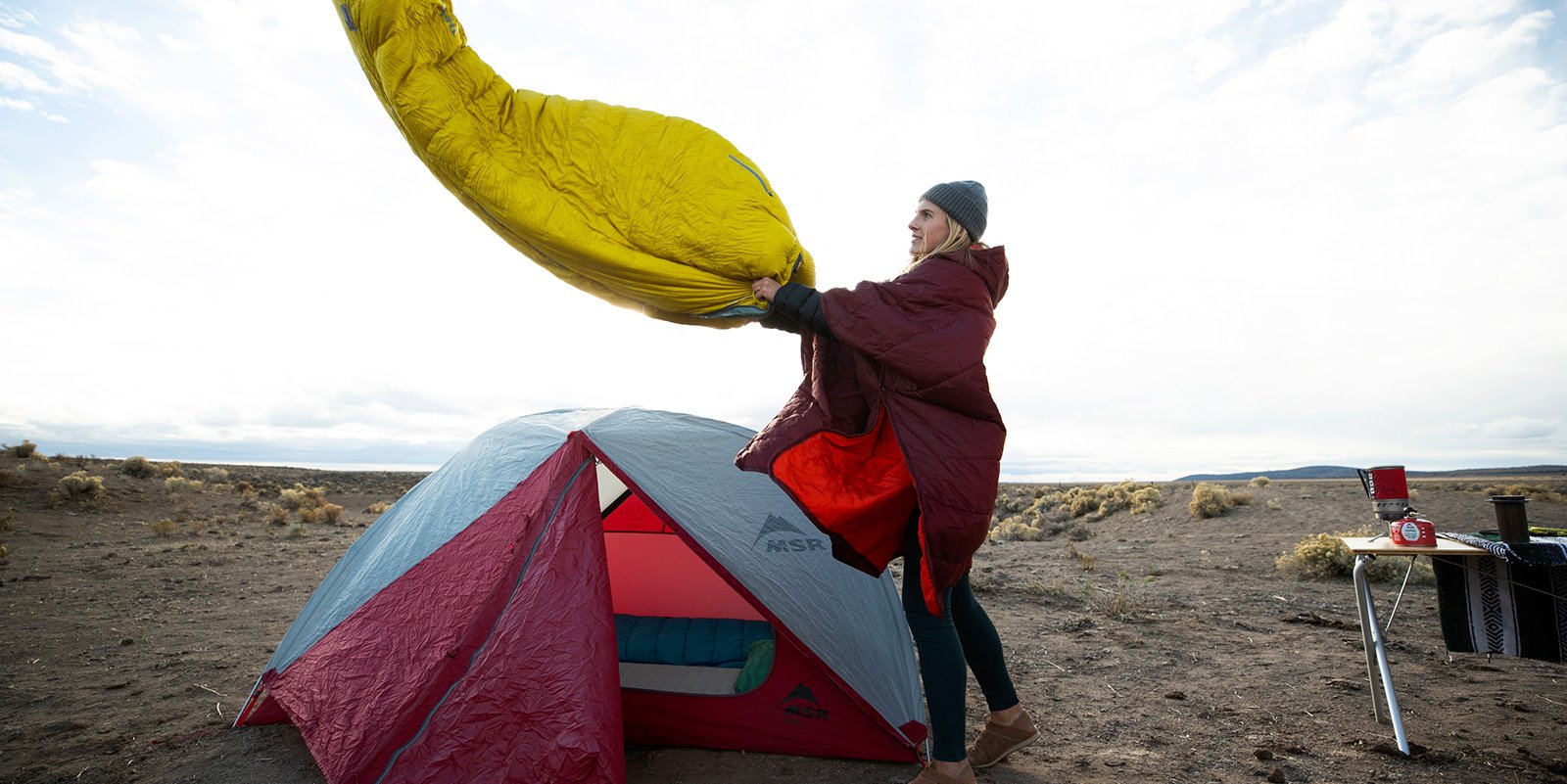After months of planning and preparation, the big backpacking trip is finally here. You go through the mental checklist, making sure you have every essential item for your hike. After the check is complete, you shoulder your pack. After a few adjustments to the shoulder straps and waist belt, you come to a realization; this thing is heavy! Trevor Thomas, a blind professional hiker, shares ultralight hiking tips and discusses some common pros and cons. (Note: Some images feature legacy products that may no longer be available.)
Gather hikers together, anywhere, and the conversation will eventually turn to the topic of weight. Long distance hikers are obsessive about how much gear weighs, since we carry everything we need to survive on our backs. Technological improvements have drastically changed the gear industry, causing gear to become lighter and lighter. This evolution has spawned a new trend in hiking: going ultralight.
Many hikers think that their problems will be solved and they will magically be transformed into an ultralight hiker by going to their local gear outfitter and purchasing the lightest backpacking gear available. However, this isn’t always the case and may not be the best strategy for everyone. Going ultralight is not just about a lighter pack, it is a trade-off between comfort while hiking versus comfort in camp and safety if something goes wrong. Saving weight is a problem that every hiker struggles with, regardless of how much experience they have. By examining what you carry in your pack and making changes, you can maximize your trail experience; many hikers will find that going ultralight is not necessarily their best option.
Weight Types: Food, Water and Base
Of the different types of weight hikers carry, there are only three basic categories: food weight, water weight and base weight. When added together, you have your total weight, which is what you carry on your back. When attempting to go lighter, do not change everything at once. Consider making adjustments to your hiking style during shakedown hikes to discover if they are going to work before heading out on a thru hike or long excursion.
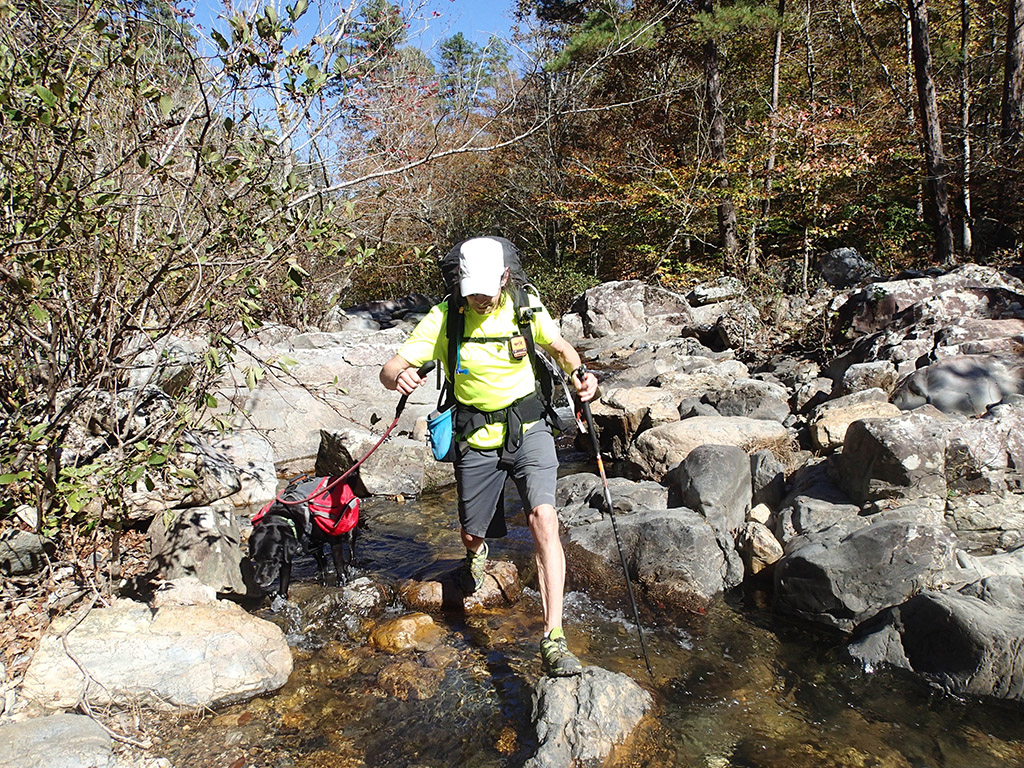
Food Weight
Food weight is a good portion of your overall weight and, when managed properly, can be the easiest and least expensive way to reduce the overall weight that you carry. Without changing anything, you can reduce your food weight dramatically by simply hiking further each day. It may not seem like much, but a few extra miles per day will reduce the number of days on trail between resupply stops. Fewer days on trail means a sizable reduction in your food weight, providing you a more comfortable carry.
If you are going to hike further each day, you will need more energy. Many hikers assume that packing more food will provide more energy. This is not necessarily the case. The only guarantee of packing more food is a heavier pack. The type of food you eat can dramatically affect your energy level throughout the day. Research to find out how many carbohydrates, calories, protein and fat you are getting out of the food you are packing. This can be highly technical and the type of fuel each person needs will differ. The environment and weather can also play a major factor on how you fuel your hike. Talk with a nutritionist if you need guidance packing nutritious and calorie-dense food that can reduce your weight while providing you the energy you need.
For hikers who do not wish to get highly technical, a good rule of thumb is to only carry food that provides more than 100 calories per ounce. A healthy balance between carbohydrates and protein will give you more sustained energy than items with lots of sugar. Remember that hikers need more fat in their diets than most people and there is nothing wrong with the traditional Snickers bar for a quick energy boost.
Packing better food is a good start to reducing your food weight. Next, consider how much your packed food weighs, including all of the packaging. Simply changing storage bags or removing certain food from the original packaging can eliminate a lot of weight. Use a postal scale and, literally, weigh your options. You might be surprised at just how much weight can be saved by this simple change.
One thing that you should never consider when attempting to save weight is eliminating emergency rations. Things go wrong in the backcountry and you need to be prepared. A good general rule is to carry one additional day’s worth of food for emergencies.
After a resupply, your pack will be its heaviest. We have all made the mistake of packing too much food. It is always preferable to have too much, rather than not enough. Remember that you can always eat your way to a happier existence!
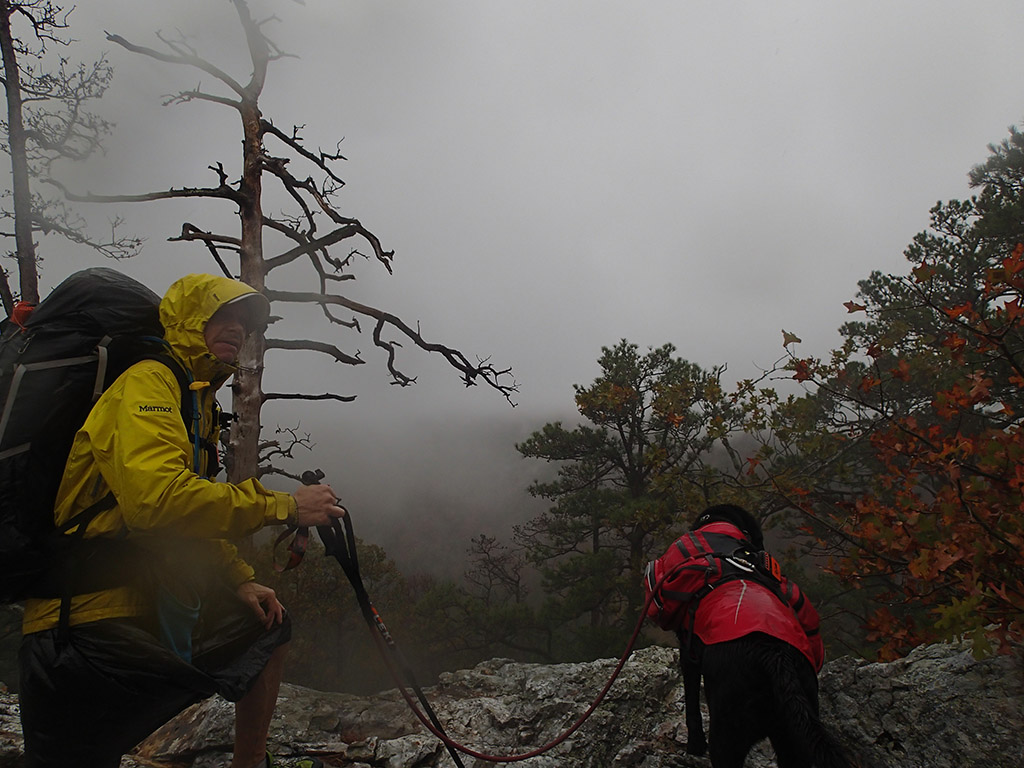
Water Weight
The first question I ask a hiker complaining about their pack weight is “How much water are you carrying”? Many hikers do not consider that the amount of water they carry can have a huge impact on their overall pack weight. They simply top off their bottles before heading out from camp. Often this is not necessary and they end up carrying more water than was needed. Remember that water weighs about 2.4 pounds per liter. The amount you need will vary depending on your physiology and the conditions you are hiking in. The easiest way to reduce the amount of water that you carry is to know your environment and the number of water sources that are available to you throughout the day. Inevitably, it is nearly always more than they actually need and can be avoided. Most trail guides list water sources and rate them according to quality and availability. Take a moment and check water availability each day. The more sources that are listed, the less you will need to carry with you. A little planning can go a long way to reducing your water weight.
Try to drink throughout the day, no matter how much water you carry or how many times you have to stop to drink. Do not wait until you are thirsty to start. If you do, you are already starting to get dehydrated. To ensure that you are getting the water you need try super hydrating when you stop for water. The concept is simple, while stopping for water, drink an extra liter or two while you are there. You will get the water you need and won’t have to carry as much throughout the day. However, the practice does have its risks. Drinking too much water can cause problems, but I have never personally heard of anyone having issues.
If you are one who needs a lot of water around camp try planning your campsites near water sources to avoid having to dry camp. Water management takes time and planning, and can greatly reduce your pack weight and increase your comfort.
Better food and water management are easy to address and relatively inexpensive. These changes can have a dramatic impact on your hiking experience, but are not as exciting as shopping for new gear.
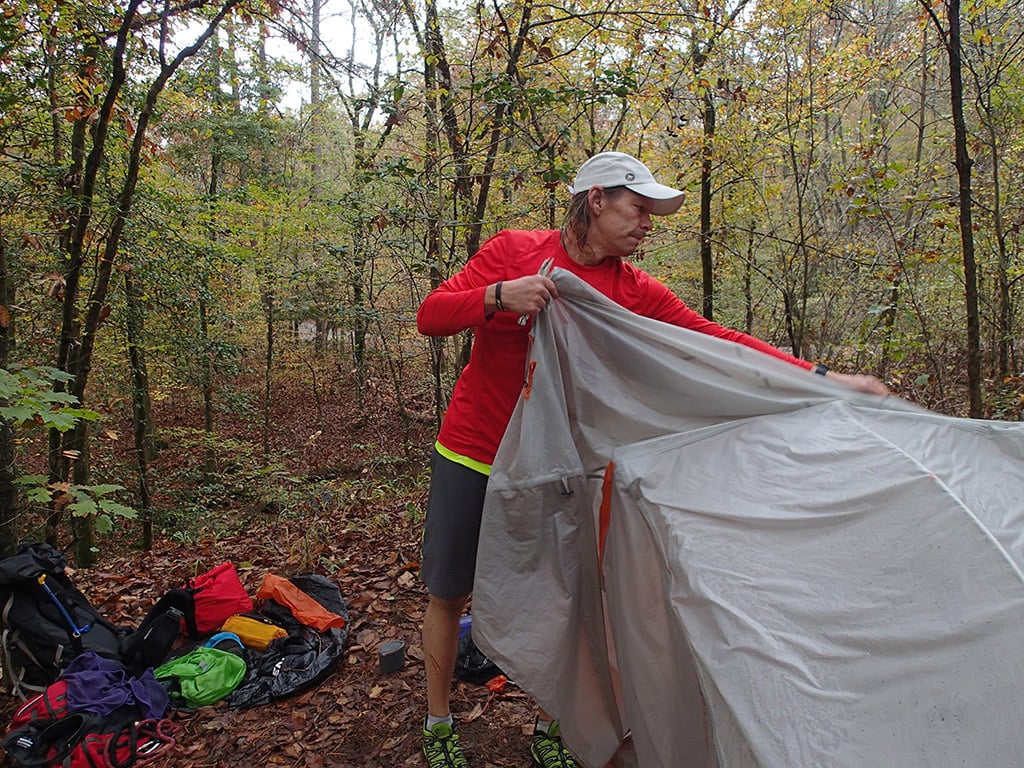
Base Weight
Add up all the weight of all your gear including your pack and you have your base weight. Making changes to your gear can have serious ramifications and can get expensive quickly, so do your homework before heading to your local outfitter or pressing the “add to cart” button on the internet.
Remember that your gear is your only defense against the elements and it needs to be appropriate for the conditions. Making gear decisions based solely on weight alone can leave you ill prepared to deal with life in the backcountry. Before trading out your gear for the latest ultralight gear, make sure that what you replace fits your hiking style and never trade out your entire kit all at once. Try to trade out one or two pieces at a time until you know how they perform. Going lighter is a trade-off for a lighter pack while sacrificing comfort and possibly safety. Your comfort zone will ultimately dictate how light you will be able to go.
Start by getting rid of everything you do not actually need. Eliminate extra clothing, duplicate and frivolous items. Weigh everything, and remember that grams add up to ounces and ounces add up to pounds. Every little bit counts.
After ridding yourself of all your unnecessary gear, it is now time to examine the remaining items that constitute your base weight. When sorted, there are only a few basic categories that make up your kit: shelter and sleep system, clothing and layers, cooking system, water purification, and your miscellaneous gear. Before you start changing out gear, do some research, because these decisions can be very expensive and if made poorly can have safety implications.
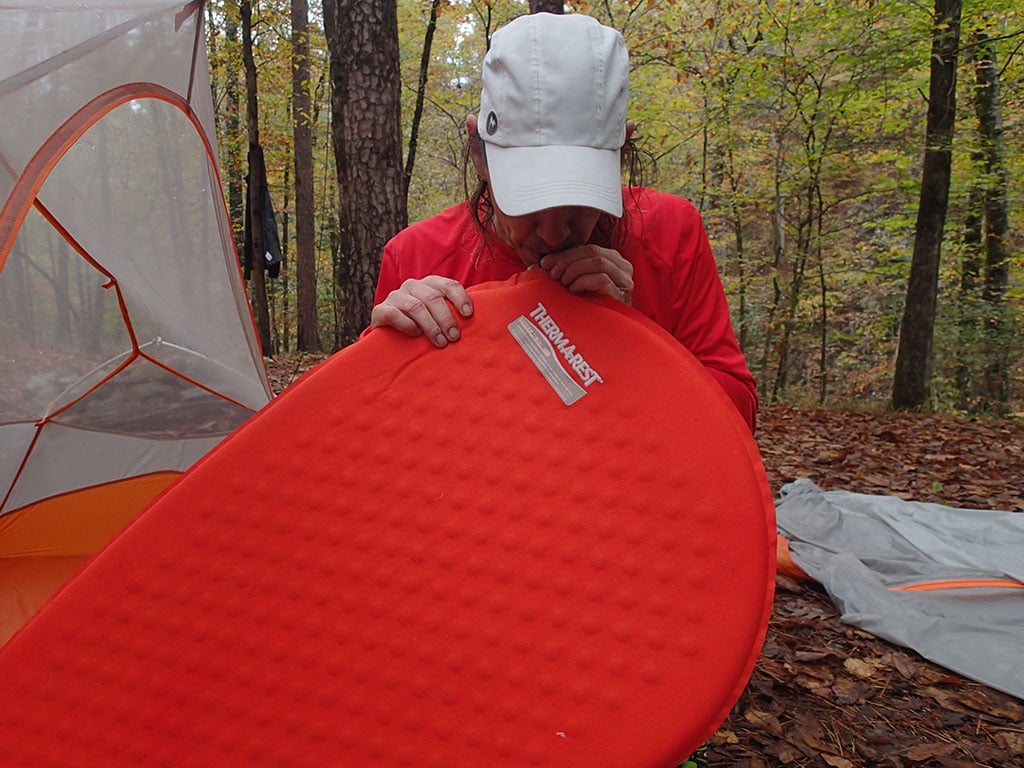
Sleep Systems & Shelters
A good place to start when examining your gear is your shelter and sleep system. They typically will be some of your heavier pieces and most hikers do not change them out as often as other gear. Decide what type of shelter you can live with and purchase the lightest one that is suitable for the conditions you will be hiking. For instance, it may not be the best idea to take a hammock with you if you are hiking above tree line in the Sierras.
Your sleep system consists of your sleeping bag and pad. Decide what degree of comfort you can tolerate while in camp and try out the different options. If you use a synthetic bag and want to save weight, try switching to a down bag. They perform better and are usually a lot lighter. Many down bags, like the Therm-a-Rest Questar 20, use hydrophobic down, making them water resistant. Sleeping pads are a personal choice and there are many options and lengths available. Do your homework and decide which one is right for you. Check out Therm-a-Rest’s Sleeping Pad Finder if you need help deciding which pad will meet your needs. Remember that you will be sleeping on it every night.
Though designed to provide you with a good night sleep, your shelter and sleep system are your last line of defense against weather. It is never advisable to buy one that is not suitable for your application in an attempt to save a little weight. Over the years, I have weathered more storms than I care to count, sheltering in my tent and my bag. You may not always be comfortable, but they can save your life. Make these choices wisely.
Clothes
Your clothing and layering system are your protection from the elements while hiking. Layers should be chosen on functionality, and should work together to keep you protected. Weight is always a concern, but it should be a secondary one. It makes no sense to have the lightest shell on the market if it will not keep you protected. For most conditions, a few good base layers, mid layers, hat, gloves, rain pants, and your shell are all you really need. Remember that a layering system that works well for you on the AT in March may not be appropriate for early June conditions in Colorado.
Cookware
The next piece of equipment that needs to be addressed is your food preparation. There are many options for cooking food, but they can be broken down into a few different types: isobutane canisters, white gas, and alcohol. Before making a final decision on a stove, you should consider fuel availability, reliability, and ease of use. Isobutane can be hard to find in some places and cannot be shipped in resupply boxes. White gas can be found nearly everywhere, but multi-gas stoves require more maintenance. Alcohol stoves are incredibly lightweight, but can be hard to use in high wind and are very inefficient. Other factors to consider are weather, altitude, and cooking style. Not all cooking options perform the same at high altitude and in inclement weather conditions, so you will want to keep this in mind while shopping. Different stoves also have different capabilities ranging from simmer to boiling water. One ultralight option is not taking a stove at all, and packing high calorie, cold meals. This option, however, can have psychological implications, especially if the weather is really bad.
Water Treatment
Finally, every hiker needs potable drinking water. Nearly every backcountry water source contain pathogens. There are numerous ways to purify water, ranging from simple tablets to complicated filters. There are some great water treatment products available, so research the options and find the lightest method that can handle the accessible water. Even though many pathogens are harmless, you should never eliminate your purification method in order to save weight. It is not worth it, because there are waterborne pathogens that can make you sick, and others that can kill you.
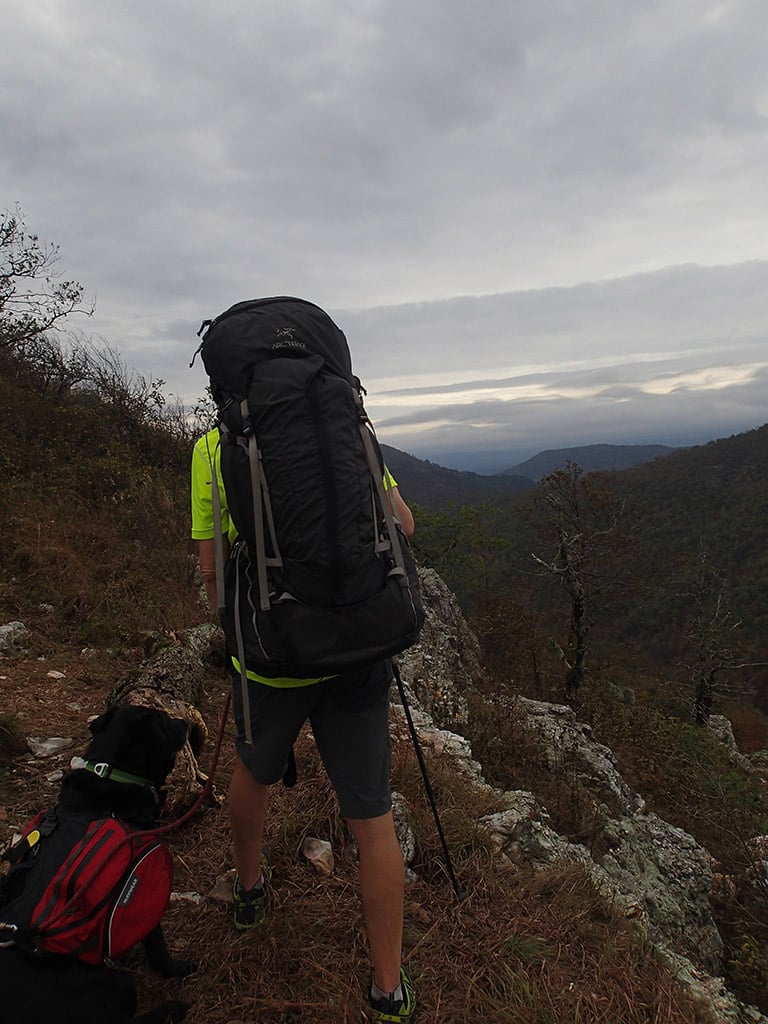
Every hiker, regardless of experience, has personal gear in their kit. The one thing this gear has in common is that it can add a lot of weight to your pack. Some of the more common items seem to involve technology. Solar panels, smart phones, Go Pro®’s, iPad®’s, and bags of charging cables are commonplace on the trail. Recently, I have even started running into hikers carrying drones. On the ridiculous side, I have met hikers with cast iron frying pans, full-size axes and machetes; I even ran into hikers carrying a skateboard and a manicure/pedicure set and makeup kit!
Remember that the key is to weigh all of your miscellaneous gear and decide if you value each piece enough to carry it on your back for hundreds or thousands of miles. A little common sense will go a long way when making your decisions. At the end of the day, if you are willing to carry the weight, then do it.
After making all of your other adjustments, consider a new backpack. Choosing the correct backpack will make the difference between a comfortable carry and a horrible experience. In many cases, the lightest pack may not always be the best choice. All packs have load limits and different sweet spots. When shopping for a pack, try out the different models, packed with your personal gear. Knowing how to properly pack your backpack will make a huge difference in how it carries. Make sure that everything you will be taking with you on trail will fit and carry well before making your final decision. As always, the lightest thing on the market might not be the best option for you, depending on your particular hiking style. Often times, a pack that weighs four pounds will carry your gear better than one that weighs half that amount, depending on what you pack into it.
Though I have gone ultralight in the past, I do not consider myself an ultralight hiker any longer. For the first several years of my career as a blind hiker, I either hiked alone, with a partner, or my team. Like many people, situations in my life changed. Four years ago, I received my first guide dog, Tennille, who became my constant hiking companion and partner. In order to make hiking with her possible, I had to make some major changes to my hiking style which dramatically altered my pack weight. Tennille is my working guide dog, and to protect her from injury, she carries little of her own gear. Her pack holds only her shell, boots, bowl, Sony Action Cam and her toy. In addition to my own gear, I carry her pad, sleeping bag, all of her food, supplements, and water. I have also switched to a two person tent to accommodate her needs. By ultralight standards, my pack weight is heavy, but it was a choice that I made voluntarily. In the end, I feel that my situation has made me a better hiker because I have found solutions to problems that I wouldn’t have had otherwise. I found ways to shave weight and am as light for my situation and hiking style. I will continue to find new ways to save weight wherever I can in order to give Tennille and I a better time on the trail.
Though most of us will never qualify as a true ultralight hiker, that does not mean we cannot find ways to save weight and improve our overall hiking experience. Being classified as an ultralight hiker is just a label and not a reflection on ability or experience. The trail does not care how heavy or light your pack is. The most important thing is getting out and enjoying the experience. The best piece of advice that I can offer is to hike your own hike.
Related Posts:
- The Ultimate Ultralight Backpacking Gear Checklist
- 10 Ways to Lighten Backpacking Pack Weight
- Lightweight Hiking Gear: 5 Thru Hike Essentials
Updated. Originally Published May 11, 2020.
